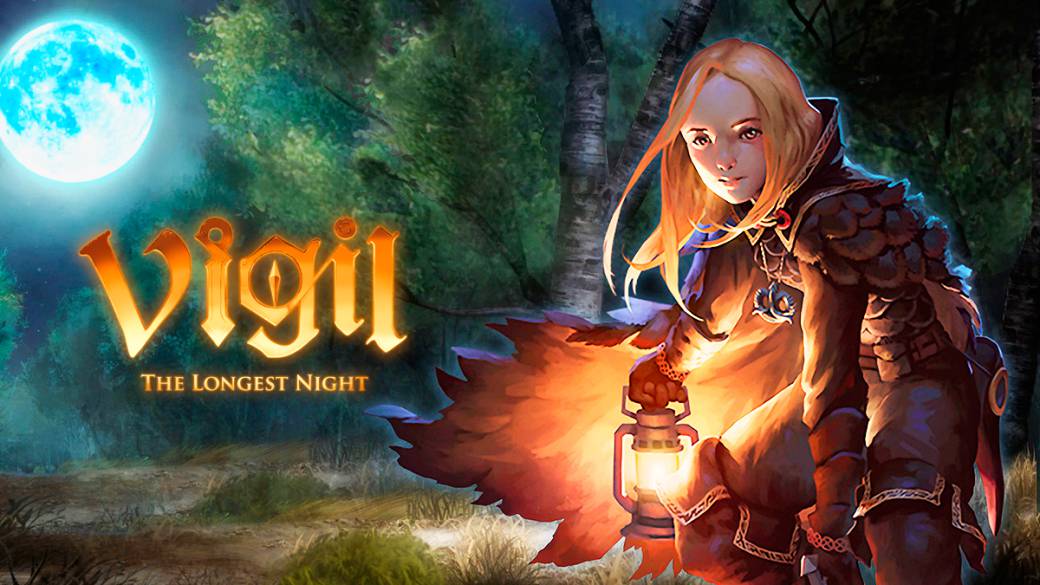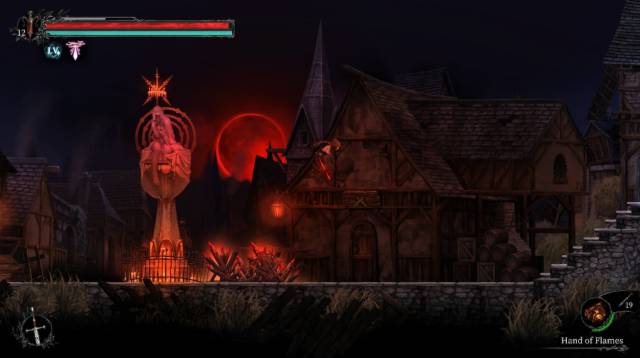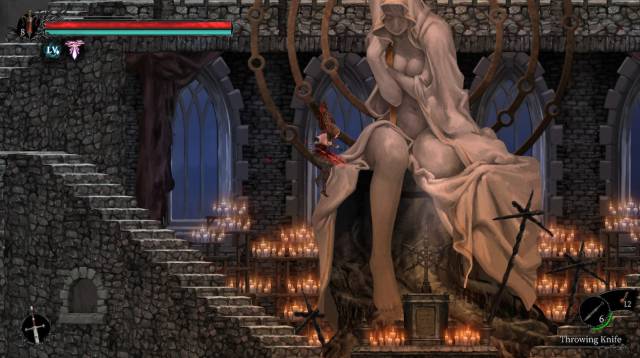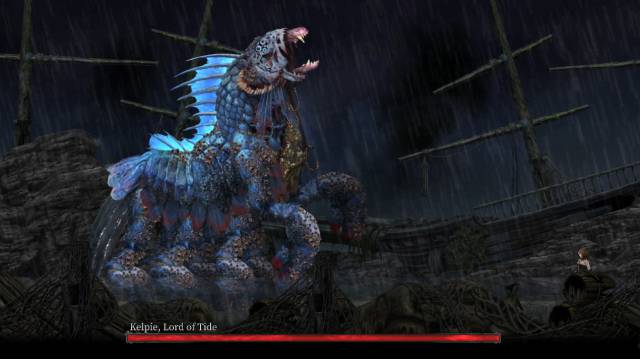
We analyze the first Glass Heart Games game, an heir to Salt and Sanctuary that has the form of a metroidvania, soul of Souls and nods to Lovecraft.
More than a decade after its birth, the Souls genre has proven to have very good alternatives to the rubric of its creators. The reign of Miyazaki and From Software is far from over, but under their umbrella we have enjoyed notable games like Ashen, Nioh, Remnant: From the Ashes, and The Surge. A second branch has even appeared within the family that has taken its proposal to two dimensions. An unexpected evolution, but which curiously has given us some of the best heirs to his legacy, such as Hollow Knight and Salt & Sanctuary. The first of them, without going any further, ranked sixth in our Top 10 of “the best Dark Souls games”. Both titles serve as a reference to Vigil: The Longest Night, protagonist of today’s Reviews. A new metroidvania that joins the ranks of this “subgenre of the subgenre” and that once again claims the side scrolling within the Souls factory.
Salt & Sanctuary, your reference
Vigil: The Longest Night is the first game from Glass Heart Games, a small indie studio that hails from Taiwan and was founded back in 2016. But its humble origins, budget, and obvious lack of experience are no excuse. The biggest reference of the title is Salt & Sanctuary, which they mention in all their press releases and with which a curious crossover has even been announced. Considering that it was developed by just two people, the numbers should not serve as a pretext this time. The objective should be to offer an experience as special as the one that the Silva couple gave us, which we awarded with a 9 in the FreeGameTips Reviews. And to be honest, the truth is that Vigil: The Longest Night does not succeed. It is less ambitious and much simpler. It is less inspired and shorter and more guided than usual. But still, the title has come out good and guarantees dozens of monsters, hundreds of deaths and thousands of parry fights and perfect timing. It also spreads it with an interesting story and a world out of Lovecraft’s nightmares.

The atmosphere of the game is captivating and makes up for the graphic deficiencies. It has hints of Lovecraft, Bloodborne and Taiwanese folk legends.
Perhaps its biggest flaw is the patience it demands from the user and the number of times it forces them to turn a blind eye. And we are not referring to its difficulty, or its learning curve, but to a host of problems unrelated to the playable, but capable of turning anyone back. It is no longer just about the lack of translation. It is no longer that it has subtitles in more than nine different languages and none of them is Spanish. We can accept that it comes in full English. We can also deal with loading times. There are many – very many – they are present every two times three and on top of that they are long. But hey, we continue even having to wait, disconnect from his world and take a look at his mobile every so often. Nor is it a matter of complaining about that “length” of three, four hours, quite linear and simple. Nothing happens because the title takes time to explode. We even accept that the application can hang and close frequently, kicking us into the menu and throwing away our last hour of play (or more). It is none of that … and at the same time it is all of that at once. To this day, Vigil: The Longest Night makes no effort to like us and needs a couple of updates at the very least. To get to enjoy it, it requires that we insist, that we grant it several licenses and swallow with relatively big problems.
The game would need a couple of updates at the very least. It must alleviate its continuous loading times, jerks and crashes.
If we continue scratching and chipping stone, we will end up finding a mineral that may not be diamond, but it is certainly not coal. Because Vigil: The Longest Night has its successes, like that setting halfway between Lovecraft’s work and the stories and legends of Taiwanese culture. Its creators propose us to travel a realistic, dark and delusional world that they portray to perfection through a very special artistic style and according to them inspired “by the art of Chinese paper cutting.” We do not see the relationship, but it is the same, the result is a handful of beautiful settings and a huge repertoire of monsters, with overwhelming final bosses. They are also well accompanied thanks to the melodies composed by Valjakka, lead singer and guitarist of Whispered, a well-known Finnish “melodic death metal” group. Graphically it could give a lot more of itself (animations, level of detail, effects, performance, etc.), but its setting, music and bestiary make up for the shortcomings.

The religious fanaticism of his story is reminiscent of Blasphemous. The game has several endings and depending on what secondary schools we are doing, the world around us changes.
Lost in a Lovecraft nightmares
The story of Vigil: The Longest Night is also surprisingly engaging in a genre that tends to stake everything on its lore. The game puts us in the shoes of Leila, a vigilante (or what is the same, a monster hunter) who returns to Maye, her hometown, for the celebration of the so-called Shimmerless Day (“Dull Day”), date that commemorates the curse that weighs on his world, condemned to an eternal night. There he hopes to meet Daisy, a little sister whom he has not seen for years, when he left to complete the vigilante training. However, upon arrival Daisy is nowhere to be found and Leila soon discovers that several people from the town have begun to disappear, so she gets down to work and sets out on her search. What has become of the missing persons? Where does this new plague of monsters that ravages the vicinity of Maye come from? It is a simple plot that does not invent the wheel, but it becomes increasingly twisted, macabre and depressing. It includes time jumps, surprises and changes depending on the side missions we do and the decisions we make during them. Although for our taste the ending is too ambiguous and “interpret it as you see”, it has several outcomes and its first two sections engage, especially with the irruption of religious fanfare, plagues and supernatural entities that trace the destiny of the world and play with us. It’s funny to see how our actions affect them and arouse our curiosity with your questions. To it you have to add a lore reminiscent of Bloodborne and the result is clear, catch.

The huge bestiary and repertoire of final bosses are the best of the game
Duration and difficulty
For us, beating the game has taken us around 15 hours on normal difficulty and completing most of the secondary ones. But the most important thing is that it has left us wanting a second round in which we act differently, better appreciate certain plot details and finish the missions that were left in the pipeline. In addition, some secondary and the best objects in the game cannot be obtained until a second round, with more money accumulated. Regarding the degree of difficulty, Vigil: The Longest Night is accessible on normal difficulty, but also challenging and satisfying. Of its levels, only the last one has seemed really complicated, but largely because the rest are small areas, it is difficult to get lost and there are enough save points. Now, as far as their bosses are concerned, they can all become a toothache, and especially three that come from the underworld and are optional. We have no doubt that, on difficult, those who seek blood, sweat and tears will be more than satisfied.

The combat ends up being simple and simple, without changing depending on what weapons or strategy we use, and without allowing us to specialize with our protagonist.
At the playable level we find what is expected within the genre … but to a certain extent. There is a button for light attack, another for heavy attack, a third to dodge and a fourth to block, to which we must add the possibility of using objects or spells. Leila has, in addition to the health bar, a green resistance bar that first empties and then refills, but is orange. If it reaches the limit we will be exhausted, immobile and exposed for a few seconds, and if we are hit while it is in orange we will receive more damage than normal. You have to know when to risk and face its consequences. It goes without saying that dodging at the exact moment or blocking and counterattacking is essential. For the rest, after that prologue of several hours that we talked about before, the approach is the usual. We have several areas at our disposal to go to them in the order we want. By overcoming their respective boss we will gain a new ability (double jump, slide on the ground …) and we will be able to revisit the different areas to discover new sections with these powers. We also have four skill trees (one for swords, one for daggers, a third for heavy weapons, and the last to improve our health, endurance, and ability to feint and counter). As there are, there are even different options to improve and enchant our armor. The rest are fighting, fighting, and more fighting. Every now and then a slight platform section (when the two come together is when it works best). What is wrong then? What we said before, ambition.

When push comes to shove, it doesn’t matter what kind of weapon and magic we use. The combats and the way to face them does not change. The strategy is always the same. In fact, most of the time, you don’t even need to block, just knowing how to dodge is enough. There is a trace of simplicity that prevents the experience from taking an important leap in terms of quality and depth. Where it is most noticeable is when leveling up, because here we will not receive points to distribute and improve Leila’s attributes, specializing in a style of play. Here they are distributed automatically and we are only allowed to invest in the skill tree, which in turn seems small and more given the speed at which we level up. (In our 15 hours we spent 50 comfortably, filling practically two and a half trees of the four there are). The same happens with the world at our disposal, in which scenarios are repeated throughout history (even with slight changes) and whose size ends up looking somewhat reduced and linear. The map is of little use, it hardly marks things and we never know what we have left to explore and what not, although we will not need much either. At the end of the day, backtracking is minimal and there are hardly any secrets worth going back for. The exploration leaves a little half, giving the feeling that the most important thing is always in plain sight. We also don’t have too many types of armor at our disposal (like five sets, roughly) and the same is true of powers and thrown weapons. When we die there is not even a soul system (or salt, as in Salt & Sanctuary) that prompts us to continue and forces us to recover our belongings. If we die, touch load game and resume from the last statue in which we saved. The result is an accessible game, very dynamic and intuitive, but at the same time easy to master. Between the first and last bad, there is no feeling that we have progressed or evolved too much. Still liking the controls, it is flat and little varied in the playable. It becomes the ideal proposal for those who want to access the genre or experience a slightly lighter version of it than usual.
* We have performed this Reviews with a code provided for the Nintendo Switch version.
CONCLUSION
Still being in full English. Still having fearsome loading times. Still taking three or four hours to start. Still needing a couple of updates to avoid unexpected jerks, crashes and shutdowns. And still being far from the depth and richness of the mirror in which one looks, Salt & Sanctuary. Despite all that, Vigil: The Longest Night is a perfectly enjoyable experience. A new Souls in two dimensions that captivates by its history and universe, full of nods to Lovecraft, Bloodborne and Taiwanese mythology. A very grateful title at the controls, perhaps a bit simple to master, but full of final bosses and combats as challenging as we want. An adventure of around 15 hours that will appeal to fans of the genre and especially to newcomers, who are looking for a slightly more accessible entrance to it, a slightly lighter than usual. When after all those “stills” you want to do a second round … it’s a great sign.
THE BEST
- Its setting with touches of Lovecraft and Taiwanese culture.
- The huge bestiary and the final bosses.
- The story, which also has several endings and is affected by our actions.
- Very dynamic, intuitive and grateful to the controls.
WORST
- Loading times. Many and long.
- Without translating into Spanish.
- The game sometimes crashes, ejects you, and loses hours of play.
- Simpler and much less ambitious than its great reference: Salt and Sanctuary.
- It takes time to start and its backtracking is null.
Good
It meets the expectations of what a good game is, has quality and does not have serious flaws, although it is missing elements that could have taken it to higher heights.
